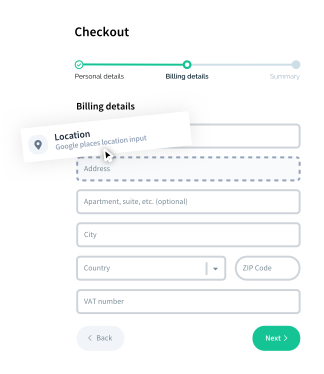Display error / success messages at the bottom of the form
Learn how to create a custom view for the form.
First, we have to create a new component called Vueform_reversed.vue which will be our template replacement for <Vueform> component.
Then, we have to copy the <template> part of the original <Vueform> component from: https://github.com/vueform/vueform/blob/main/themes/blank/templates/Vueform.vue
vue
<!-- Vueform_reversed.vue -->
<template>
<form :class="classes.form" @submit.prevent="submit">
<slot name="empty" :classes="classes">
<component is="FormLanguages" v-if="showLanguages"/>
<component is="FormTabs" v-if="showTabs"/>
<component is="FormSteps" v-if="showSteps"/>
<FormElements><slot/></FormElements>
<component is="FormMessages" v-if="showMessages"/>
<component is="FormErrors" v-if="showErrors"/>
<component is="FormStepsControls" v-if="showStepsControls"/>
</slot>
</form>
</template>
<script>
export default {
data: () => ({
merge: true,
defaultClasses: {}
})
}
</script>Next, we have to register the Vueform_reversed.vue component as an alternative view for Vueform and create a preset that uses that view for Vueform component and adds margin top to the error / message containers:
js
// vueform.config.js
import { defineConfig } from '@vueform/vueform'
import Vueform_reversed from './Vueform_reversed.vue'
export default defineConfig({
templates: {
Vueform_reversed,
},
presets: {
reversed: {
views: {
Vueform: 'reversed',
},
addClasses: {
FormErrors: {
container: 'mt-4'
},
FormMessages: {
container: 'mt-4'
},
}
}
}
})Once ready, we can use the reversed preset, that will use our custom template with class extensions:
vue
<Vueform :presets="['reversed']" />

